Variation
- Differences exist between organisms of the same species
- These differences are known as variation
- Examples of variation include:
- Coat colour in mammals
- Body length in fish
- Flower colour in flowering plants
- If every organism in a population is identical then no individual will be favoured over another
- There will be no advantageous characteristics leading to increased survival and chances of reproduction, and so there would be no increased likelihood of passing on those advantageous alleles
- In this situation, a population's characteristics would remain the same over time and it would be unable to adapt to any environmental changes
Causes of Variation
- Variation results from small differences in DNA base sequences between individual organisms within a population
- There are several sources of these differences in DNA base sequences:
- Mutation
- Meiosis
- Random fertilisation during sexual reproduction
Mutation
- The original source of genetic variation is mutation
- A mutation is a change in the DNA base sequence that results from a copying error during DNA replication
- Mutation results in the generation of new alleles
- Mutations that take place in the dividing cells of the sex organs lead to changes in the alleles of the gametes that are passed on to the next generation
- A new allele may be advantageous, disadvantageous or have no apparent effect
- An advantageous allele is more likely to be passed on to the next generation because it increases the chance that an organism will survive and reproduce
- A disadvantageous mutation is more likely to die out because an organism with such a mutation is less likely to survive and reproduce
- Note that a mutation taking place in a body, or somatic, cell will not be passed on to successive generations, and so will have no impact on natural selection
- Mutation is the only source of variation in asexually reproducing species
Meiosis
- There are two main events during the process of meiosis that generate variation
- Crossing over
- Random orientation
- Crossing over is the process by which homologous chromosomes exchange alleles
- During meiosis I homologous chromosomes pair up
- The non-sister chromatids can cross over and get entangled
- As a result of this, a section of chromatid from one homologous chromosome may break and rejoin with the chromatid from the other chromosome
- This swapping of alleles is significant as it can result in a new combination of alleles on the two homologous chromosomes
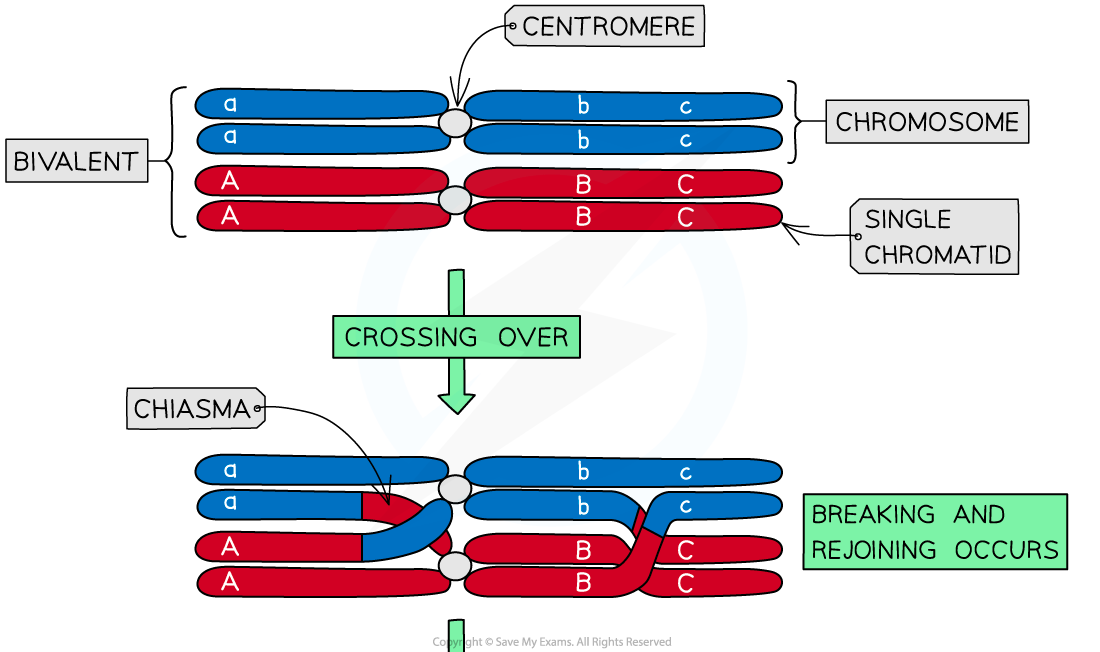
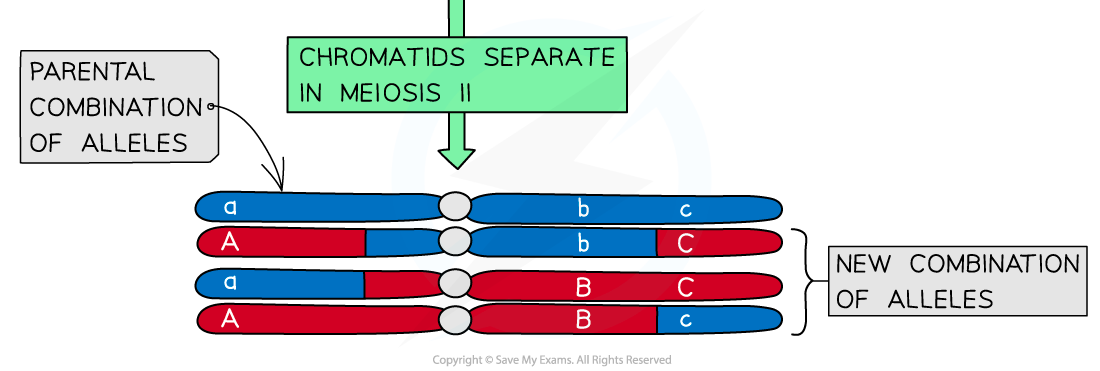
The process of crossing over can result in new combinations of alleles
- Random orientation occurs due to the independent arrangement of homologous pairs along the equator of the cell during metaphase I
- Each pair can be arranged with either chromosome on either side of the cell; this is completely random
- The orientation of one homologous pair is independent, or unaffected by the orientation of any other pair
- This is sometimes described as independent assortment
- The homologous chromosomes on the equator of the cell are pulled apart to different poles, and will each end up in a separate daughter cell
- The combination of alleles that end up in each daughter cell depends on how the pairs of homologous chromosomes were lined up
- To work out the number of different possible chromosome combinations the formula 2n can be used, where n corresponds to the number of chromosomes in a haploid cell
- E.g. for humans this is 223 which calculates as 8,324,608 different combinations
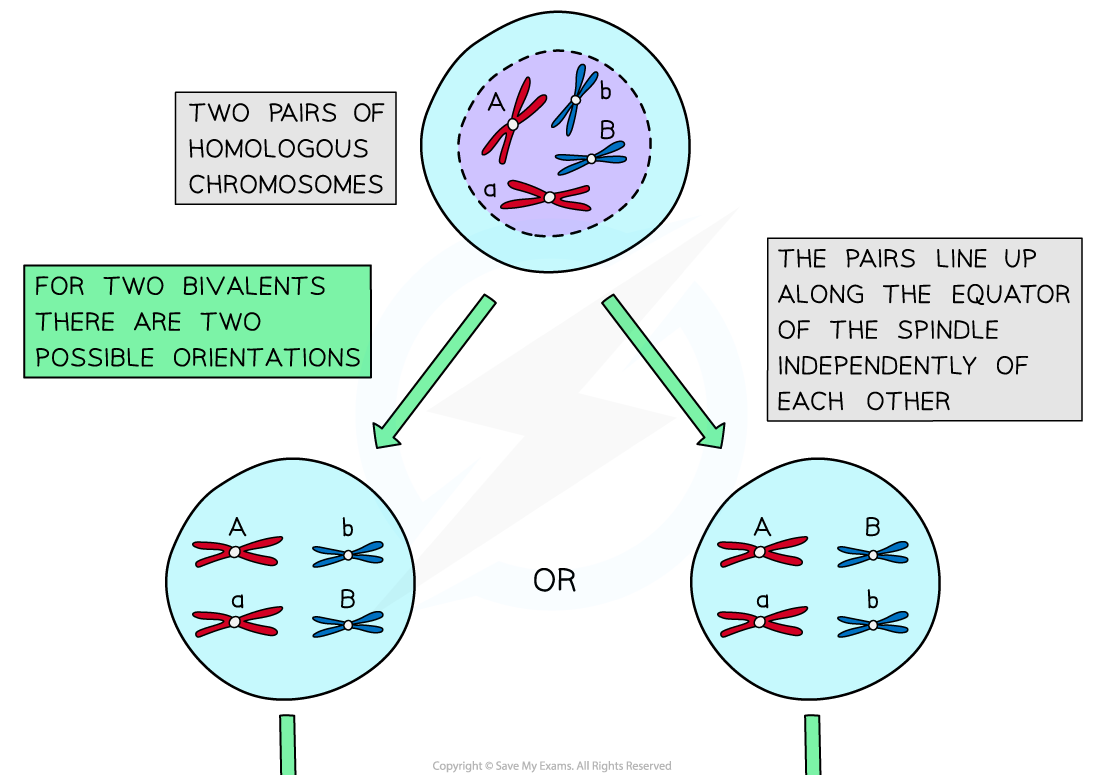

Random orientation of chromosomes
Random fertilisation during sexual reproduction
- Meiosis creates genetic variation between the gametes through crossing over and independent assortment
- This means each gamete carries substantially different alleles
- During fertilisation any male gamete can fuse with any female gamete to form a zygote
- This random fusion of gametes at fertilisation creates genetic variation between zygotes as each will have a unique combination of alleles
- There is an almost zero chance of individual organisms resulting from successive sexual reproduction being genetically identical
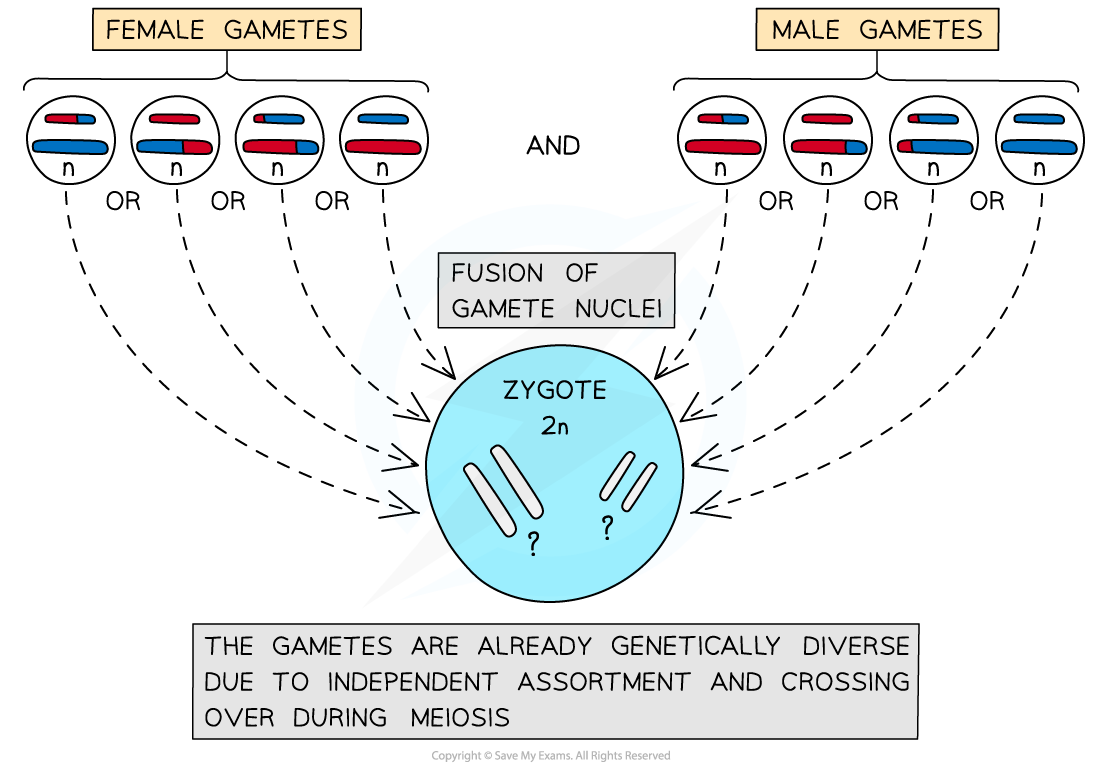
The random fusion of gametes during fertilisation
Sources of Genetic Variation Table
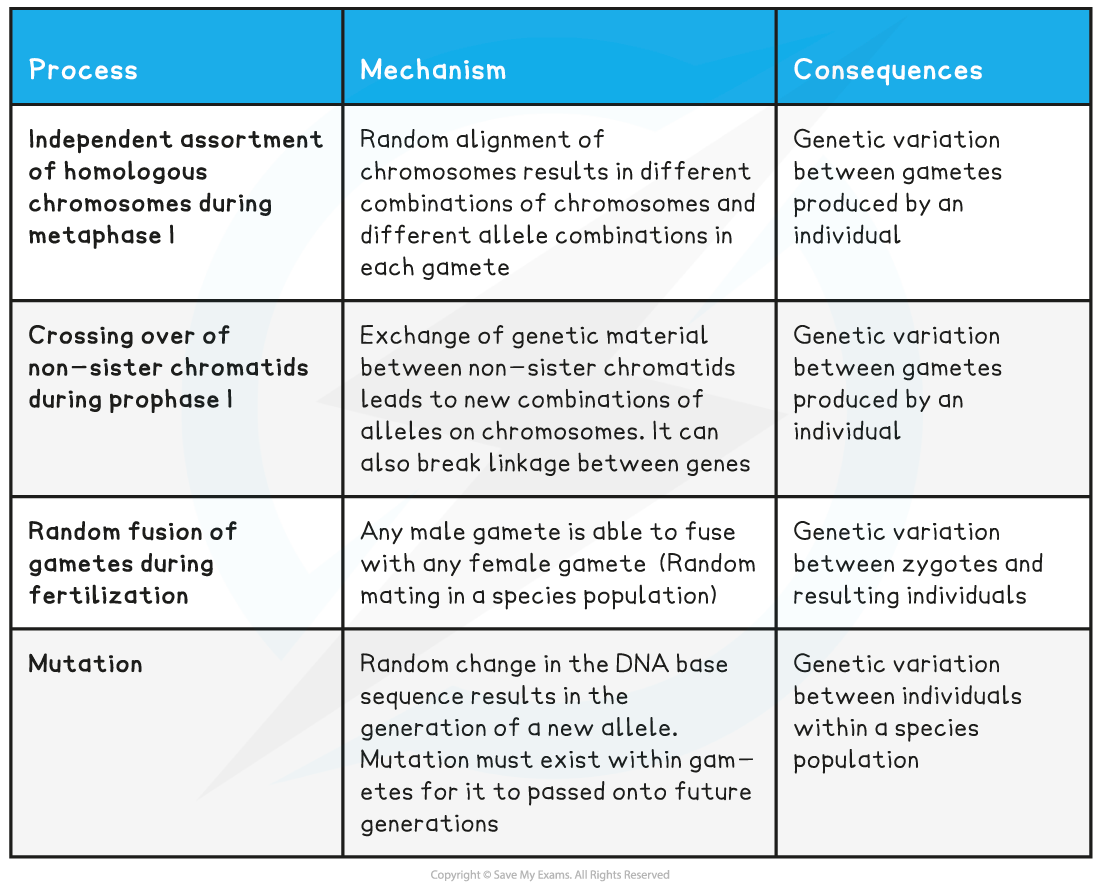
Adaptations
- Adaptations can be defined as:
- Characteristics that cause individuals to be well suited to their environment and methods of living
- When describing an adaptation it is always a good idea to relate the structure of a characteristic to its function, e.g.
- Fish gills are an adaptation for survival underwater; they have a very large surface area, enabling them to maximise oxygen absorption from water
- The thick fur of a polar bear is an adaptation for survival in a cold environment; it is thick, trapping a layer of warm air next to the polar bear's body and providing insulation
- Different beak shapes in birds enable the consumption of different types of food; some species of finch have short, cone-shaped beaks that enable them to crack nuts and seeds
- Adaptations arise in species gradually by evolution through the process of natural selection
- In a slowly changing environment, populations are able to adapt by natural selection and survival continues
- If an environment changes quickly, the process of natural selection is too slow and adaptation cannot occur fast enough; in this situation, a population must migrate to a different environment or it will go extinct
Exam Tip
Remember that adaptation occurs as a result of natural selection; a process that acts on randomly occurring variation, and does not occur as a direct, purposeful response to an environment; avoid any statements that imply that adaptations occur 'so that' an organism can survive in its environment. Instead, it is correct to say that adaptations occur by natural selection as a result of random variation in populations.
